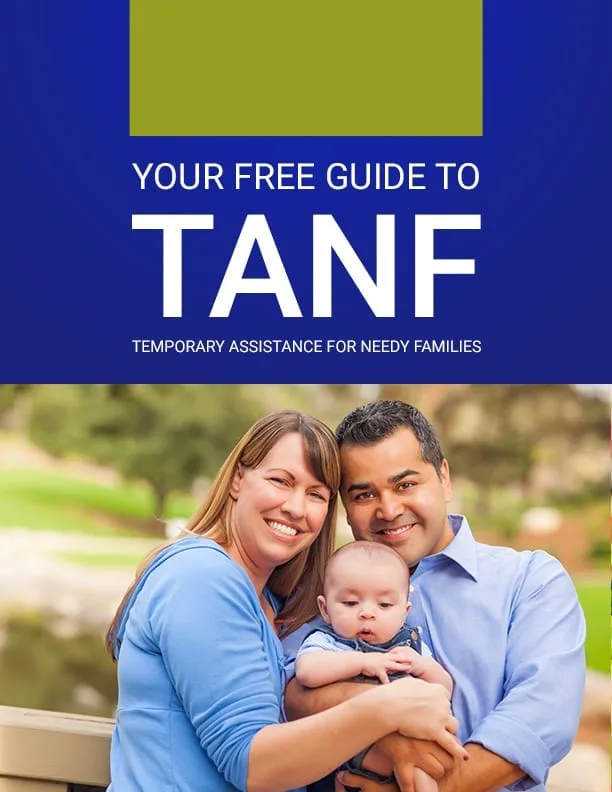Using A Section 8 Voucher: What Landlords Don’t Tell You
Using A Section 8 Voucher: What Landlords Don’t Tell You
We are privately owned and not affiliated with the government in any way or form.
Getting a Section 8 Housing Choice Voucher can feel like winning the lottery. After all the paperwork, waiting lists, and interviews, you’ve finally been approved for help with your rent. But then comes the hard part: actually finding a place to live that accepts Section 8 vouchers.
For many recipients, this is the most frustrating and confusing part of the process. The housing market is extremely competitive. Landlords can be picky. And it often feels like there’s a hidden set of rules no one told you about. This guide is here to help you find ways to navigate that reality.
We’ll cover what landlords might not tell you, how to find places that do accept vouchers, and what to do if you’re running into obstacles. If you’ve got a voucher in hand, this guide might just be for you.
What Is Section 8?
The Section 8 Housing Choice Voucher Program is a federal initiative run by local Public Housing Authorities (PHAs). It helps qualifying low-income families, seniors, and individuals with disabilities afford decent, safe housing in the private market.
Here’s what you need to know about how the program works:
- Voucher Holders Pay a Portion: You typically pay 30% of your income toward rent. The PHA covers the rest, up to a local limit called the “payment standard.”
- You Find the Housing: Unlike public housing, with Section 8, you choose a rental from any landlord willing to participate.
- Landlord and Unit Must Qualify: The rental must meet HUD’s safety and quality standards and pass a PHA inspection.
- Vouchers Can Expire: Most PHAs give you a set time (usually 60-120 days) to use your voucher, or you risk losing it.
Who Gets Section 8?

Getting Section 8 starts with meeting the requirements for the program. To qualify, your household income needs to fall below a certain limit—usually around 50% of the median income for your area. These limits are set by HUD and can vary depending on where you live, since housing costs differ from one city or county to the next.
The exact income limit also depends on how many people live in your household. Larger families may qualify with a slightly higher income, while single-person households have a lower cap. Your local housing authority will review your household size, income, and other factors to determine if you meet the eligibility criteria.
When you’re ready to apply, you’ll need to do so through your local housing authority. Each one manages its own list, so you’ll need to apply directly with the office that serves your area. You can find their contact details on the HUD website. As part of the application, you’ll need to provide documents that verify your income, household size, and other eligibility factors.
The wait to receive a voucher can be long—sometimes several months, or even years—depending on demand and funding in your area. Once your name reaches the top of the list, your housing authority will reach out to start the next steps, which include confirming your eligibility and helping you begin the search for a qualifying rental.
While the process can feel overwhelming at times, staying organized and proactive can make a big difference. If you’re eligible and willing to follow through, Section 8 can offer valuable support in securing safe, affordable housing for you and your family.
Difficulties With Using a Voucher
Many voucher holders assume that once they have the subsidy, the rest will be easy. Unfortunately, that’s rarely the case. There are a few obstacles that often stand in the way of finding an affordable home using a voucher.
Affordable housing is in short supply, especially in urban areas. Voucher holders are competing not just with each other but with cash-paying renters. In some cities, there could be rejection rates of over 70% for Section 8 applicants.
Even though the rent is largely guaranteed, many landlords hesitate to accept vouchers due to:
- Extra paperwork
- Required inspections
- Payment delays
- Misconceptions about tenants with vouchers
Not to mention, you might be racing against the clock to find a unit before your voucher expires. And if you can’t find a place in time? You may need to reapply and go back on the waiting list.
Tips for Finding Landlords Who Accept Vouchers
Despite the challenges, many landlords do accept Section 8—especially if you know where to look. Here are a few tips for finding landlords working with HUD and accepting Section 8 vouchers.
Start with Your Local PHA
- Ask for a list of landlords or units that already participate in the program.
- Some PHAs partner with local nonprofits or housing navigators to help you search.
- You can find your local PHA using the HUD website here: https://www.hud.gov/contactus/public-housing-contacts
Search Online Listings
- AffordableHousing.com: One of the largest databases for voucher-friendly rentals.
- GoSection8.com: Offers search filters by city, rent amount, and voucher acceptance.
- Facebook housing groups and Craigslist: Look for listings that explicitly say “Section 8 welcome.”
Tips for Searching on Other Rental Sites
- Use keywords like “Section 8 accepted” or “housing voucher welcome.”
- Consider writing to landlords of units you like, even if it’s not listed—they may be open to it.
Contact Property Management Companies
- Some larger companies are familiar with Section 8 and willing to work with voucher holders across multiple properties.
Work with a Real Estate Agent
- Some agents specialize in working with low-income renters or have relationships with landlords who accept vouchers.
Common Reasons Landlords Reject Voucher Holders
Unfortunately, not all rejections are legal—or fair. Here are some common (and sometimes sketchy) reasons you might hear “no”:
1. “Too Much Red Tape”
Some landlords don’t want to deal with paperwork, inspections, or the perceived delay in rent payments from PHAs.
What you can do:
Explain that the process is simpler than they think, and rent is direct-deposited after approval. Offer to walk them through the steps or provide a flyer from your PHA.
2. “We Don’t Accept Section 8”
This is legal in many places, but not everywhere. Some states and cities have laws against “Source of Income” discrimination.
What you can do:
Check your local laws. If it’s illegal, you can report them to a fair housing agency or the HUD regional office.
3. “You Don’t Meet Our Requirements”
Some landlords raise the credit or income requirements to disqualify voucher holders.
What you can do:
Ask if they will consider your voucher as part of your income (some must, depending on local laws). Offer references, proof of stable income, or a co-signer.
4. Property Fails Inspection
Older units may have maintenance issues that disqualify them from Section 8 approval.
What you can do:
Help the landlord understand what the inspection covers and what small upgrades may be needed. Some repairs are minor and fixable within a short timeframe.

What To Do If a Landlord Says No
One of the most discouraging moments for many voucher holders is hearing a landlord say, “Sorry, we don’t take Section 8.” After working so hard to get your voucher, it can feel like the door is slammed shut before you even get a chance to step inside.
But here’s the thing: you don’t have to walk away immediately. In many cases, that “no” isn’t final—it’s an opportunity.
First, don’t be afraid to ask the landlord why they don’t accept vouchers. This may feel uncomfortable, but asking the question calmly and respectfully can open the door to a real conversation. Many landlords are hesitant not because they’ve had bad experiences, but because they’ve heard bad things—delays in payment, difficult inspections, or rigid rules.
These concerns are often based on myths or one-sided stories. When you ask why, you’re giving yourself a chance to address the real issues directly.
Once you understand their hesitation, you can shift into education mode—not confrontation. You might explain how payments from the Public Housing Authority (PHA) are typically made reliably each month, or that the inspection process, while detailed, is there to make sure the property is safe for both the tenant and landlord.
If you’ve rented with a voucher before and have a good history, this is the time to bring it up. Share examples of positive experiences, reference letters, or even suggest they talk to your previous landlord. The goal is to replace assumptions with facts.
But sometimes, no matter how reasonable your approach, the answer remains “no.” That’s when it’s crucial to know your rights. In some states and cities, landlords aren’t allowed to reject you just because you use a housing voucher.
These laws fall under what’s known as “Source of Income” protections. States like California, New York, Illinois, and Massachusetts have these protections in place. Many large cities also enforce them. If you’re living in one of these places, a landlord who denies you solely because you have a voucher may be breaking the law.
If you suspect discrimination, you have options.
- You can contact your local Fair Housing office to report the issue.
- You can also file a complaint directly with the U.S. Department of Housing and Urban Development (HUD) at hud.gov/fairhousing.
These agencies exist to protect rights and hold landlords accountable. Even if you’re unsure, it’s worth reaching out—they can help clarify whether what you’re experiencing is legal.
In the end, your voucher is a powerful tool, but the housing search requires resilience, patience, and strategy. Each rejection can feel like a setback, but every conversation is also a learning opportunity—and possibly a step closer to the right home.
How to Move A Voucher to Another Area
Did you know you can take your voucher with you to another city, county, or even state? This is called portability—and it can open up more options, especially if you’re struggling to find a landlord in your current area.
How Portability Works
- Your current PHA must approve your move and coordinate with the receiving PHA.
- The new PHA must also accept Housing Choice Vouchers (some areas only offer project-based assistance).
- You’ll need to meet any local requirements and go through the application or recertification process again.
Common Steps to Move With Your Voucher
- Notify Your Current PHA – Submit a request to move.
- Find a Receiving PHA – Research areas with better voucher acceptance or more affordable housing.
- Submit Required Documents – The two PHAs will coordinate to transfer your file.
- Start Your Housing Search Again – Use the receiving PHA’s listings or local resources.
Things to Consider
- Payment standards vary—your voucher may go further (or not as far) depending on location.
- Some PHAs may have longer wait times to process incoming vouchers.
- Porting can delay your move, so plan ahead if you’re nearing voucher expiration.
Final Tips for Making It Work
Once you receive your Section 8 voucher, it’s important to start your housing search right away. Time is limited, and many vouchers come with an expiration window—usually between 60 to 120 days. The sooner you begin looking, the more options you’ll have and the less stress you’ll face as your deadline approaches. Keep yourself organized by tracking the landlords you’ve contacted, their responses, and any follow-up dates. A simple spreadsheet or notebook can go a long way in helping you stay on top of your search and avoid missed opportunities.
Rejection is unfortunately a common part of the process, but don’t let it discourage you. Many voucher holders hear “no” several times before finding the right fit—your persistence will pay off. Stay in close contact with your local Public Housing Authority (PHA), too.
Let them know how your search is going, ask questions, and don’t hesitate to request an extension if you’re nearing the expiration date on your voucher. PHAs may also have additional resources, tips, or landlord connections they can share.
Finally, remember that you don’t have to go through this alone. There are nonprofit organizations, housing advocacy groups, and legal aid services that specialize in helping people navigate the voucher process. These groups can help you understand your rights, communicate with landlords, or even advocate on your behalf if challenges arise. Reaching out for support isn’t a sign of weakness—it’s a smart step in securing the stable housing you deserve.
Conclusion
Having a Section 8 voucher is a huge step toward housing security—but only if you can actually use it. The reality is, many people face invisible roadblocks that no one talks about. Landlords don’t always make the process easy, and the system can feel stacked against you.But armed with the right information, resources, and persistence, you can make it work. Whether you’re facing rejection, exploring portability, or just trying to figure out where to start, remember: you do have options—and you’re not alone.









